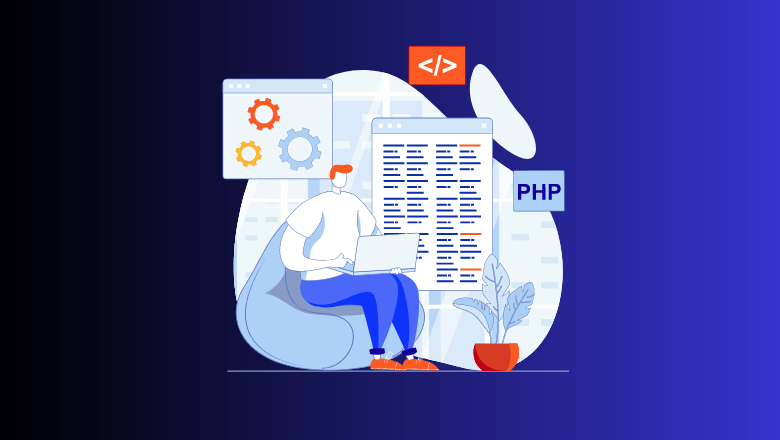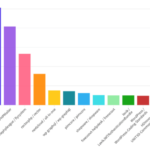 PHP is an open-source scripting language that has become ubiquitous in web development. But did you know that PHP has a rich history that spans over two decades? Understanding PHP’s origins and history is key to grasping its growth and development into one of the most widely used programming languages today.
PHP is an open-source scripting language that has become ubiquitous in web development. But did you know that PHP has a rich history that spans over two decades? Understanding PHP’s origins and history is key to grasping its growth and development into one of the most widely used programming languages today.
Key events in PHP’s history include:
| Year | PHP Version/Event | Description |
|---|---|---|
| 1995 | PHP/FI | Personal Home Page / Forms Interpreter created by Rasmus Lerdorf. |
| 1997 | PHP 3 | A complete rewrite that introduced the PHP we know today. |
| 1998 | PHP 3 | Official release of PHP 3. |
| 2000 | PHP 4 | Powered by the Zend Engine, was released. |
| 2004 | PHP 5 | Introduced with new features like improved support for object-oriented programming. |
| 2005 | PHP 5.1 | Featuring performance improvements and PDO (PHP Data Objects). |
| 2008 | PHP 5.3 | Adding namespaces and late static bindings. |
| 2009 | PHP 5.3 | Released, introducing features like closures and garbage collection for cyclic references. |
| 2011 | PHP 5.4 | With traits, shortened array syntax, and a built-in web server for development. |
| 2012 | PHP 5.5 | Introducing generators and finally keyword. |
| 2014 | PHP 5.6 | With constant scalar expressions, variadic functions, and argument unpacking. |
| 2015 | PHP 7.0 | A major performance boost and introduction of type declarations. |
| 2016 | PHP 7.1 | Adding nullable types, iterable pseudo-type, and void return type. |
| 2017 | PHP 7.2 | With new object type and security improvements. |
| 2018 | PHP 7.3 | Featuring flexible Heredoc and Nowdoc syntaxes, and improved JSON error handling. |
| 2019 | PHP 7.4 | Introducing typed properties, arrow functions, and preloading. |
| 2020 | PHP 8.0 | A major update with JIT compilation and union types. |
| 2021 | PHP 8.1 | Adding enums, readonly properties, and fibers. |
| 2022 | PHP 8.2 | Further enhancements and performance improvements. |
| 2023 | PHP 8.3 | Ongoing development and updates. |
This table provides a concise overview of the major milestones and versions in the history of PHP.
PHP’s historical background can be traced back to the early days of the internet, where Rasmus Lerdorf created a simple personal homepage tool in 1994, which he called Personal Home Page Tools (PHP Tools). From there, PHP evolved into the Hypertext Preprocessor we know today, offering a vast range of functionalities and features.
Throughout its journey and growth, PHP has had a significant impact on web development practices, and its history is essential to understand the language’s continued evolution.
The Early Beginnings of PHP
PHP, standing for “Hypertext Preprocessor,” is a server-side scripting language that helps create dynamic web pages by allowing developers to embed code within HTML. The language, which has become widely popular in web development, has an interesting history that dates back to the mid-1990s.
In 1994, Rasmus Lerdorf created PHP as a simple set of Common Gateway Interface (CGI) scripts. Lerdorf’s original intention was to use PHP as a tool to track visitors to his personal website. However, he soon realized that the code he had written could be used for much more than just website tracking.
PHP’s initial success was due in large part to its simplicity and flexibility. It allowed developers to write dynamic web pages with minimal effort and quickly became a popular choice for web development. Over time, the language underwent significant changes and improvement, evolving into the robust tool it is today.
PHP Hypertext Preprocessor

As PHP continued to gain popularity, it evolved from a simple tool to a more robust scripting language known as the PHP Hypertext Preprocessor. This transformation began with the release of PHP/FI, which added support for database connectivity and form handling. It was quickly followed by PHP 3, which introduced support for object-oriented programming, regular expressions, and other advanced features.
These updates helped establish PHP as a powerful language for building dynamic and interactive websites. As a result, more developers began to adopt PHP as their language of choice, leading to its continued growth and development.
Over time, PHP’s creators and community continued to refine and improve the language. This resulted in the release of PHP 4, which brought numerous performance improvements and new features, such as better memory management and a new object model.
PHP 4 and the Rise in Popularity
In May 2000, PHP 4 was released, marking a significant milestone in the journey of PHP’s growth. PHP 4 offered numerous improvements and new features that made it a more powerful and versatile scripting language. The language became increasingly popular among web developers, thanks to its enhanced performance and the ability to build complex web applications.
With the release of PHP 4, developers could now benefit from a new object-oriented programming (OOP) model, which allowed for better organization and abstraction of code. The introduction of OOP in PHP 4 paved the way for increased code reusability and easier maintenance of complex codebases, making it a preferable choice for developing enterprise-level applications.
During this time, PHP also gained a massive community of developers and enthusiasts. The PHP community provided support for beginners and advanced developers, enabling them to share knowledge and best practices. Moreover, the community contributed to the development of numerous open-source tools, libraries, and frameworks that improved the language’s capabilities and made it easier to use.
PHP 4’s Impact on the Industry
PHP 4’s release and growth marked a turning point for the language, which saw its adoption rates skyrocket in the following years. It became the language of choice for building dynamic and interactive web applications, front-end, back-end, and full-stack development. PHP’s popularity also led to the establishment of several PHP-based content management systems like WordPress, Drupal, and Joomla, which are widely used by developers and businesses worldwide.
PHP’s journey and growth continued at a fast pace, and the language’s popularity hit new heights with the introduction of PHP 5, which made it an even more powerful scripting language.
Object-Oriented Programming in PHP 5
PHP 5, released in 2004, brought significant changes to the language, including the introduction of object-oriented programming (OOP) features. This marked a major milestone in PHP’s journey and growth, as it allowed developers to write more organized and reusable code.
With the addition of OOP, PHP became more flexible and versatile, opening up new possibilities for web development. This allowed PHP to better compete with other programming languages, which had already incorporated OOP.
Some of the key features introduced in PHP 5 include:
- Classes and objects: These are key components of OOP, allowing developers to create reusable code structures.
- Inheritance: This allows developers to create new classes based on existing ones, reducing the need for redundant code.
- Exceptions: These are used to handle errors and unexpected events that may occur during code execution.
PHP’s adoption of OOP contributed to the language’s growing popularity and led to the creation of many new PHP frameworks, such as Symfony and Laravel, which embraced OOP principles and made it easier to build complex web applications.
PHP Frameworks and their Influence

As PHP continued to grow in popularity, developers began to create frameworks to streamline the development process. Frameworks like Laravel, Symfony, and CodeIgniter became increasingly popular as they provided pre-built code and architecture for various web applications, reducing development time and increasing productivity.
These frameworks have had a significant impact on PHP’s journey and growth by improving the language’s development practices. They introduced standardized coding practices, better documentation, and better organized code structure, leading to faster development and fewer errors.
Moreover, PHP frameworks provide libraries and tools for seamless integration, making it easier to integrate complex functionalities with existing code. The introduction of PHP frameworks has also helped to increase the reusability of code, saving time and effort for developers.
Today, PHP frameworks have become an integral part of the development process, and their influence on PHP’s journey and growth cannot be overstated. They continue to evolve, bringing new capabilities and features to web development, and expanding the horizon of possibilities for PHP.
PHP vs. Other Languages: A Comparison
When it comes to web development, PHP has been a popular choice for many years. However, it’s not the only language out there. Developers have a multitude of languages to choose from, each with their own strengths and weaknesses. Let’s take a look at how PHP compares to other popular programming languages.
Python
Python is a high-level programming language known for its clear syntax and readability. It’s often used for web development, scientific computing, and data analysis. Compared to PHP, Python has more libraries and frameworks available, making it a versatile language. However, PHP is faster and more suitable for web applications that require speed and high-performance.
Ruby
Ruby is a flexible, object-oriented programming language with a focus on simplicity and productivity. It’s often used for web development, particularly with the Ruby on Rails framework. Compared to PHP, Ruby is more expressive and easier to read. However, PHP is faster and more scalable, making it a better choice for large-scale web applications.
JavaScript
JavaScript is a client-side scripting language used for creating interactive web pages. It’s often paired with PHP for server-side scripting. While PHP is used for server-side scripting, JavaScript is used for client-side scripting. Both languages work together to create dynamic, interactive websites.
Overall, PHP has its strengths and weaknesses compared to other programming languages. However, its versatility, ease of use, and widespread adoption have contributed to its continued growth and success in web development.
The Continued Evolution of PHP
Since its creation in the mid-1990s, PHP has undergone significant evolution and growth.
The release of PHP 7 in 2015 marked a major milestone in PHP’s journey and growth, providing substantial performance improvements and introducing new features such as scalar type hints and anonymous classes.
PHP 8
Building on the success of PHP 7, PHP 8 was released in 2020, introducing even more performance improvements, new features, and language enhancements. PHP 8 includes the Just-In-Time (JIT) compiler, which significantly boosts execution speed and reduces memory usage. Other features include union types, attributes, and constructor property promotion.
With each new release, PHP continues to evolve and improve, demonstrating its significance and relevance in modern web development.
PHP’s Impact on Web Development
PHP has come a long way since its humble beginnings as a personal homepage tool. Over the years, it has evolved into a powerful scripting language that has transformed the world of web development. Its journey and growth have been nothing short of impressive.
Today, PHP is widely adopted by web developers around the world and has become a cornerstone of modern web development practices. Its versatility and ease of use have made it a popular choice for building dynamic websites and web applications.
The Growth of PHP
PHP’s journey and growth have been marked by several key milestones. From the early days of PHP/FI to the release of PHP 8, PHP has undergone significant changes and improvements, enhancing its performance and capabilities.
One of the most significant changes was the introduction of object-oriented programming features in PHP 5. This enabled developers to write more powerful and complex applications with greater ease and efficiency.
In addition, the emergence of PHP frameworks, such as Laravel and Symfony, has made PHP development even more accessible and streamlined. These frameworks provide developers with a set of pre-built tools and libraries that simplify the development process and reduce development time.
Examples of Sites using PHP
PHP’s journey and growth over the years have resulted in numerous successful websites and applications built using the language.
Below are some examples of companies that have achieved significant success using PHP.
| Company | Website/Application | Description |
|---|---|---|
| www.facebook.com | The most popular social networking site in the world is built using PHP as its primary language, with millions of users accessing it daily. | |
| Wikipedia | www.wikipedia.org | The world’s largest encyclopedia is built using a combination of PHP and other programming languages to enable millions of articles access to its readers worldwide. |
| Tumblr | www.tumblr.com | Tumblr is a popular micro-blogging platform that allows users to post multimedia content. It is built using PHP, powering millions of blogs worldwide. |
These companies are just a few examples of how PHP’s journey and growth have resulted in successful websites and applications. PHP’s versatility and ease-of-use have made it the language of choice for many developers and continues to be a dominant force in web development.
Wrapping Up

PHP’s history is a fascinating glimpse into the evolution of web development over the past few decades. From its humble beginnings as a simple personal homepage tool to its current status as one of the most widely-used programming languages in the world, PHP’s journey and growth have been remarkable.
Through the release of PHP/FI, PHP 3, PHP 4, and PHP 5, PHP evolved into a powerful and flexible scripting language, capable of handling complex web applications with ease. The emergence of PHP frameworks like Laravel and Symfony further accelerated PHP’s growth and established it as a top choice for developers.
Today, PHP continues to evolve with the release of PHP 7 and PHP 8, which have enhanced its performance and capabilities. Its widespread adoption in the industry has led to the development of numerous successful websites and applications, showcasing the versatility and power of the language.
External Resources
https://www.php.net/manual/en/history.php.php
https://www.php.net/supported-versions.php
FAQ

1. How did PHP begin?
Answer: PHP was created by Rasmus Lerdorf in 1994. Initially, it was a simple set of Common Gateway Interface (CGI) binaries written in the C programming language.
Code Sample – Early PHP (PHP/FI 2.0):
<!-- Example of early PHP syntax -->
<html>
<head><title>Test Page</title></head>
<body>
<!-- Including PHP code in HTML -->
<?php
echo "Hello, World!";
?>
</body>
</html>This is reminiscent of how PHP was embedded in HTML in its early versions.
2. What were the major changes in PHP 3?
Answer: Released in 1998, PHP 3 was a significant rewrite of PHP/FI 2.0. It introduced the PHP scripting engine, providing the foundation for PHP 4 and 5.
Code Sample – PHP 3:
<?php
// Introduction of more advanced functions and better abstraction
$result = mysql_query("SELECT 'Hello, World!'");
echo mysql_result($result, 0);
?>PHP 3 brought more advanced database interaction and other functionalities.
3. How did PHP 4 improve over its predecessors?
Answer: PHP 4, released in 2000, introduced the Zend Engine I for faster performance. It also brought improved support for web development techniques.
Code Sample – PHP 4:
<?php
// PHP 4 introduced sessions
session_start();
$_SESSION['message'] = 'Hello, World!';
?>Session handling was one of the new features in PHP 4.
4. What were the key features of PHP 5?
Answer: PHP 5, released in 2004, introduced the Zend Engine II with object-oriented programming, better XML support, and a built-in SOAP engine.
Code Sample – PHP 5 (OOP):
<?php
// Object-oriented features
class Greeting {
function sayHello() {
echo 'Hello, World!';
}
}
$greet = new Greeting();
$greet->sayHello();
?>Object-oriented programming became a major part of PHP with version 5.
5. How has PHP evolved in the latest versions (PHP 7 and PHP 8)?
Answer: PHP 7, released in 2015, significantly improved performance and introduced type declarations. PHP 8, released in 2020, added features like JIT compilation and union types.
Code Sample – PHP 7 and 8:
<?php
// PHP 7 type declarations and PHP 8 union types
function addNumbers(int|float $a, int|float $b): int|float {
return $a + $b;
}
echo addNumbers(5, "10.5");
?>PHP 7 and 8 continued to evolve with stronger type systems and performance improvements.
PHP’s history is marked by continuous improvement and adaptation to the changing landscape of web development. From simple scripts to a full-featured language, PHP’s evolution reflects the dynamic nature of the internet and web technologies.
Michael is an accomplished technical author renowned for his expertise in scientific computer science. With a distinguished career as a development manager at Yahoo, Walmart, and FedEx, he has demonstrated exceptional leadership and technical acumen in delivering successful projects.
With an unwavering interest in PHP development, Michael has been at the forefront of this powerful programming language for the past 22 years. His passion for PHP has driven him to explore its vast potential and harness its capabilities to create innovative and scalable web solutions. Michael’s expertise in PHP development encompasses various frameworks, libraries, and best practices, making him a trusted authority in the field.



![How to use Cursor AI to write PHP Code[Example]](https://hirephpdeveloper.dev/wp-content/uploads/2025/03/How-to-use-Cursor-AI-to-write-PHP-Code-1-150x150.png)



